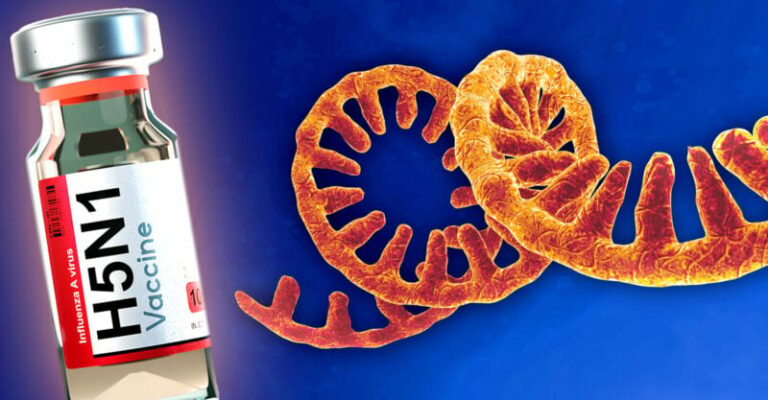Some Vaccine Types Linked to Increased Risk of Other Infections
Researchers found that vaccines that do not contain a live or weakened pathogen, while effective against the targeted infection, may also raise the risk of non-targeted infections, particularly in girls.
The authors of a preprint review found “compelling evidence” that non-specific effects (NSEs) to the immune system that occur after vaccination may raise the risk of infection from pathogens the vaccine was not designed to protect against, and may also raise the risk of infection from apparently unrelated causes.
According to the review of currently used vaccines, live-pathogen vaccines were associated with positive NSEs — enhanced protection against non-targeted infections.
However, the researchers found that other vaccine types tend to induce negative NSEs, including higher susceptibility to other infections and associated death. This effect was most notable in developing countries.
The review, by Alberto Rubio-Casillas et al., is in press and the corrected proof was published online Dec. 29, 2023, in Vaccine.
Historically, evaluating vaccine effectiveness focused solely on the product’s ability to protect against one specific disease (or multiple specific diseases in the case of multivalent vaccines). In this context, the targeted infectious agent is referred to as the “homologous” target or pathogen, while non-targeted pathogens are “heterologous.”
However, this approach to evaluating vaccine effectiveness is fading, as anecdotal, epidemiological and immunological evidence accumulates showing that many vaccines also have positive or negative NSEs.
Many non-vaccine pharmaceuticals also have positive and negative NSEs referred to as “off-target effects.” Negative off-target effects — “side effects” — usually involve toxicity which, in many cases, limits the drug’s use, safe dosage or which drugs can be prescribed with it. Many cancer drugs have negative off-target effects.
Positive off-target effects also are common and often result in a drug developed for one condition being used informally or “off-label” for a second condition. Companies often seek second or third approvals for drugs with wide off-label use.
All drugs have inherent positive, negative effects
All drugs have inherent positive and negative effects as defined by their effectiveness and toxicity.
Positive NCEs arise not by design but by serendipity. Early reports typically involve case studies and small, uncontrolled or observational studies rather than large, controlled clinical trials.
A 2004 paper observed that this has been happening since the introduction of smallpox vaccination in the late 1790s.
Many examples of anecdotal discovery exist. For example, Albert Calmette, a co-discoverer of the Bacillus Calmette-Guérin vaccine (BCG) vaccine for preventing tuberculosis, observed that children receiving his vaccine were 75% less likely to die than unvaccinated children — a benefit that could not be explained by a reduction in tuberculosis cases.
The World Health Organization recommends the BCG vaccine be co-administered with the DTP vaccines and at birth with the polio vaccine in lower-income countries. BCG is not widely used in the U.S. but is used in routine infant and childhood vaccinations in other countries where tuberculosis is more prevalent.
Calmette may have been the first to hypothesize that a vaccine for one infectious disease protected recipients from other infections.
Similarly, in 1960-1970, the Russian virologist Marina Voroshilova discovered that polio vaccination also prevented influenza. Despite the significance of this finding and its relevance to the current vaccine administration landscape Voroshilova’s paper received no citations before 2021, and only 21 citations since.
Live vaccines reported to have more positive effects
According to Rubio-Casillas et al., live or live-attenuated (weakened) vaccines are reported to have more positive than negative NSEs.
Examples include vaccines against measles, mumps and rubella (which together form the pediatric measles, mumps, and rubella, or MMR, vaccine), plus yellow fever, varicella-zoster (chickenpox), BCGand some polio vaccines.
Similar narratives have evolved around other commonly administered vaccines.
The oral polio vaccine reduced illness and death from diarrhea in Latin America in the 1960s, and research from the Soviet Union reported that it prevented respiratory infections. Studies from developing nations also associated this product with significantly lower rates of child mortality, and one study in Bangladesh claimed the oral polio vaccine reduced respiratory illness-associated deaths by 62%.
The BCG live, attenuated tuberculosis vaccine has been administered more than 4 billion times worldwide, with 100 million new neonatal immunizations occurring each year.
Soon after BCG’s debut in the 1920s epidemiologists noticed that child mortality was falling to a degree that could not be explained merely by preventing tuberculosis. This effect was seen in several other studies cited by Rubio-Casillas et al.
A 50% drop in infant mortality was also seen from observational surveys in West Africa. As is often the case, observations and one-off experiences led to three randomized controlled trials and a meta-analysis of those studies which concluded that the BCG vaccine protects against unrelated pathogens and has a positive NSE on child survival.
Brian Hooker, Ph.D., senior director of science and research for Children’s Health Defense, said any evidence of positive NSEs associated with live-virus vaccines must be weighed against the known negative side effects of those vaccines.
Hooker, co-author of “Vax-Unvax: Let the Science Speak,” cited studies linking live-virus vaccines to serious side effects. These include:
- MMR vaccines linked to febrile seizures and autism.
- MMR and varicella, or MMRV, vaccines linked to febrile seizures.
- Rotavirus vaccine linked to intussusception (folded intestine).
- Polio vaccine linked to breakthrough infections.
- BCG vaccines (co-administered with DTP and/or polio vaccine) linked to higher mortality rate in studies here, here, here and here.
Non-live vaccines may enhance risk of other diseases, especially in girls
Vaccines that do not contain a live or weakened pathogen (“non-live vaccines”) protect against the disease for which they were designed but are also associated with negative NSEs. In some instances, they may enhance the risk of other diseases, especially in females.
For example, girls receiving the non-live DTP vaccine died at twice the rate of unvaccinated girls according to one study, with a comparable disadvantage to vaccinated boys.
A similar NSE has been observed for the DTP plus hepatitis B shot and the Haemophilus influenzae type B, hepatitis B, malaria and inactivated polio vaccine.
These effects are most apparent when one of these vaccines was the last vaccine administered to a child. Research on how long this effect persists is difficult in most instances because the subjects are highly and frequently vaccinated. According to Rubio-Casillas et al., these effects persist for at least six months and occasionally for years.
These effects were first noted in developing countries. However, NSEs have recently garnered the interest of first-world health systems concerned about the cost of care. European and U.S. studies have reported that live vaccines tended to reduce hospital admissions for unrelated diseases, but non-live vaccines increased it.
The DPT vaccine has been a prime investigation target for NSEs since the 1980s when its connection to increased all-cause mortality was established.
Later studies confirmed these results, particularly in girls. But a 2016 World Health Organization report could not confirm the connection between DPT vaccination and negative NSEs despite citing several studies which, according to Rubio-Casillas et al. suffered from “severe survival bias” — the inevitable consequence that subjects who survive longer typically receive more treatment and are over-represented when reporting positive results.
On this point, the authors wrote that when this type of bias is eliminated “children who received the DTP immunization had mortality rates that were twice as high as those of infants who did not receive the DTP vaccine.”
Other vaccinations follow similar patterns, although their results are not always as clear-cut. Sponsors of the non-live RTS, S/AS01 malaria candidate vaccine claim it is 18-36% effective in preventing malaria, a modest level of protection, but with little effect on all-cause mortality in all children, and a negative effect in girls.
Other factors leading to NSEs cited by Rubio-Casillas et al. were vaccination sequence or order, antigen dose, and repeated vaccination with the same product.
Rubio-Casillas et al. concluded their study with recommendations for minimizing vaccine NSE-related deaths and illnesses through the promotion of positive-NSE products — going so far as to advise BCG vaccinations for all African infants to prevent not just tuberculosis but other infections.
Hooker told The Defender he disagreed with the authors’ recommendation, based on the studies (listed above) linking the BCG vaccine to higher mortality rates.
They also called on researchers and other stakeholders to recognize that negative NSEs are problematic:
“It can be understandable that, in a time of increasing vaccination hesitancy, numerous researchers are reluctant to even contemplate the possibility that such harmful NSEs might occur … [But] recognizing that non-live vaccines have negative effects does not mean that they should stop being used, and should not encourage people who believe that vaccines only cause harm to continue to refuse them.”
Suggest a correction






